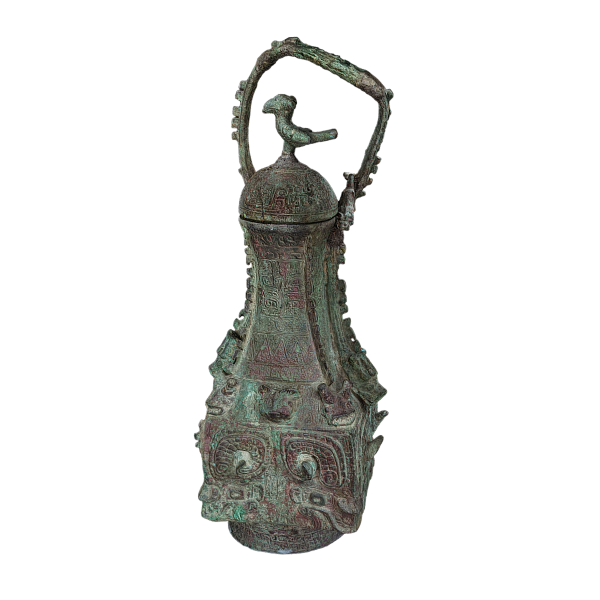Ding Cauldron with Wave Band Patterns
| Accession No. | R020412 |
|---|---|
| Period | Eastern Chou |
| Material | Bronze |
| Findspot | Tomb No. 60 Liu-li-ko Site |
| Geographic Location | Chengguan Town, Hui County, Henan Province, China |
| Dimension | H. 47 cm; Diam. of rim 47.1 cm |
Description
This ding cauldron was excavated from Tomb 60, Liulige, Hui County, Henan Province as one piece from a lieding cauldron set. The Ding’s original use was food-related, and it later became a ritual vessel representing power. Lieding means a set of dings cauldrons that are with the same decoration but in various sizes. This lieding set consists of nine pieces, which is a violation of the Lieding system as only the kings were allowed to use cauldron sets with nine. However, such arrogation is commonly seen in the noble cemeteries of the Eastern Zhou period. This ding has no lid and has a hemispherical body with a flat everted rim; the rim is set with two loop handles that are out-curving and decorated with stylized chi-dragon patterns on leiwen spiral ground. The round belly is cast with two decorative bands and rests on three cabriole legs, above which is attached a flange-like set of interlocking dragons. This vessel was cast with the piece-mold technique.


